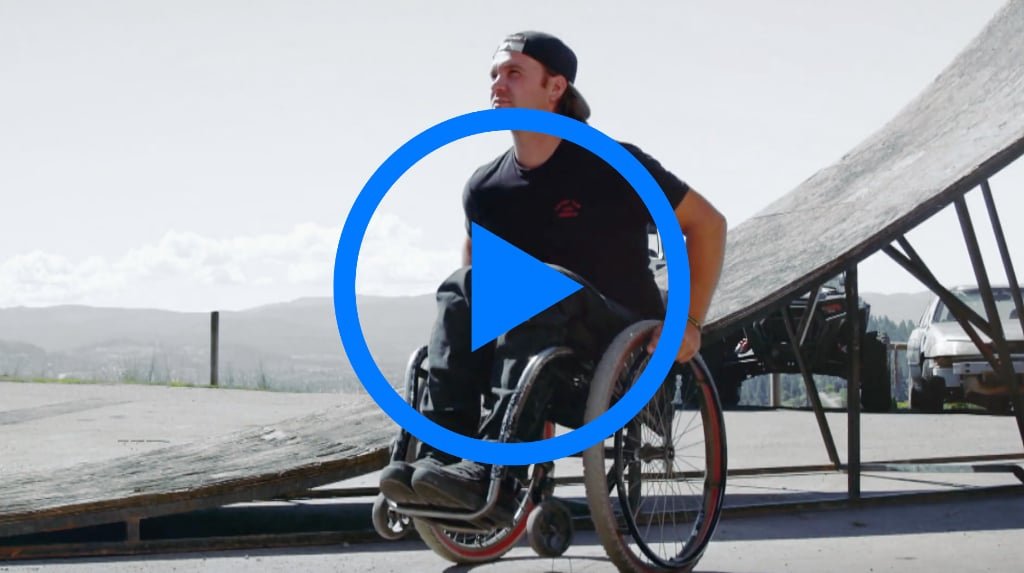Self-Identity after Spinal Cord Injury
Overview
- What Is It?
- What’s Different Now?
- What Can I Do?
- Who Can Help Me
- Resources
Our Self Identity is usually something we don’t think too much about.
We go about our daily lives, participating in leisure activities, going to work, pursuing academic endeavors and building relationships. The way we view ourselves tends to be relatively stable, with any changes happening gradually.
If you can think about the common questions we ask someone when we first meet them, they tend to be those such as Where do you work? What do you like to do on the weekends?
The way we answer these questions, along with our physical traits (depending on how much importance you place on that — consciously or unconsciously) are a large part of what makes up our self-identity.
I am a scientist.
I am a mother.
I am an athlete.
I love to kayak.
I am a cook.
I am the breadwinner for my family.
Another part of self-identity — and arguably a more consequential part, is that of our inner characteristics:
I am inquisitive.
I am determined.
I am empathetic.
I am kind.
I am perhaps a bit neurotic.
I am creative.
I am trustworthy.
These inner characteristics and personality traits may also fluctuate throughout life, but at their core tend to stay stable.
I think that, when I was younger, I was much more self-conscious about trying to look non-disabled. Over time, you gradually become more comfortable with who you are.
Dave Symington, The Spin Magazine, Spring 2015 (p19)
What’s Different Now
Understandably, after Spinal Cord Injury, many individuals feel a strong loss of self-identity sometimes along with feelings of grief. This has the potential to affect sexuality and confidence.
Everybody will have a different path and timeline, but it is very possible to reclaim self-identity, self-expression, and sexuality, usually through trying new things, taking risks — even being vulnerable at times.
What Can I Do?
It can be helpful for some to witness the journey of their peers with SCI.
MOVE ME is Kelsey Peterson’s story of the ups and downs of reclaiming self-identity and sexuality after spinal cord injury, told through the stories of several people with SCI.
“I feared that I would never feel like myself again. That carefree person, that risk taker, I felt really far from her… for a long time. And, that’s changing for me now….
I’ve lost things that I really thought defined me and I’m really trying to create a different reality without those things. I will always want my body back, but the closer I get to acceptance, the more free I am. So, I have to let those two things co-exist.”
BRUCE COOK: A stunt motorcross rider who has a spinal cord injury, Bruce Cook’s series By Hook or By Cook helps others with disabilities get out of their comfort zone and see what’s possible.
Bruce was part of the Nitro Circus, which featured world-class athletes and daredevils performing outrageous and risky stunts. His first show found him attempting the world’s first double front flip on a motorcycle and when the trick did not go as planned, resulting in paralysis. After regaining his strength and confidence, Cook was back on a modified bike and landed the world’s first backflip as a paraplegic, 10 months after his accident.
Maybe my parents’ fears came true, me getting back on the bike, but the goal of getting back on the bike was something to work towards. Especially those early days, getting up when you’re in pain, and and getting through the first few months after accident. ….It’s that drive and my family sees it, and it’s made me who I am. It’s always in the back of my mind. – Bruce Cook
SHEPHERD CENTER
Shepherd Center has partnered with the Christopher & Dana Reeve Foundation on a new video series, Cultivating Resilience After Spinal Cord Injury Trauma. Individuals express how they felt about their injury at various points of their life and commentary and insights from counselors and medical professionals.
Erin Clark
“There is an assumption that because I’m deformed and can’t walk. That I should definitely be uncomfortable with my body, and like it, and want to change it. I’m just confident with it, I can’t sincerely say that I struggle with body confidence.”
“There is an assumption that because I’m deformed and can’t walk. That I should definitely be uncomfortable with my body, and like it, and want to change it. I’m just confident with it, I can’t sincerely say that I struggle with body confidence.”
– Erin Clark – Iconic, The Spin, March 2018 (p11)
Who Can Help Me?
We are all in a process of building our identities throughout our lives as we experience major changes and life events, good and bad. Relationships, education, loss, injury, ill health, travel, work, building a family, losing loved ones, and many other experiences are all part of how we develop and understand our identities.
Peers‘ stories shared on this page show that grappling with your sense of self-identity after injury or disability shifts your life around is normal.
Getting to know others who have similar experiences of injury or disability can help – seeing how others have understood themselves again by seeking out new experiences and challenges and by being curious about how a major injury or disability relates to your identity can offer a place to start. Don’t be afraid to reach out to your local peer support organization across Canada, like Spinal Cord Injury BC.
Resources
Blogs
“Even as I fought for others to accept my body with disability, I had to learn to love it myself – SexualityandDisability.org
Diverse Sexualities and Gender Identities – Sarah Kim, YourCPF.org
Videos:
SCIRE Community:
Podcasts
Gender Identity – The Accessible Stall, Episode 88
Dating Your Own Kind – The Accessible Stall, Episode 46



